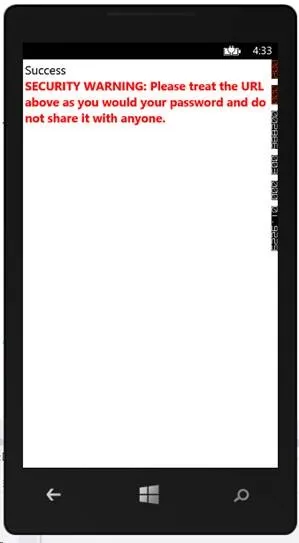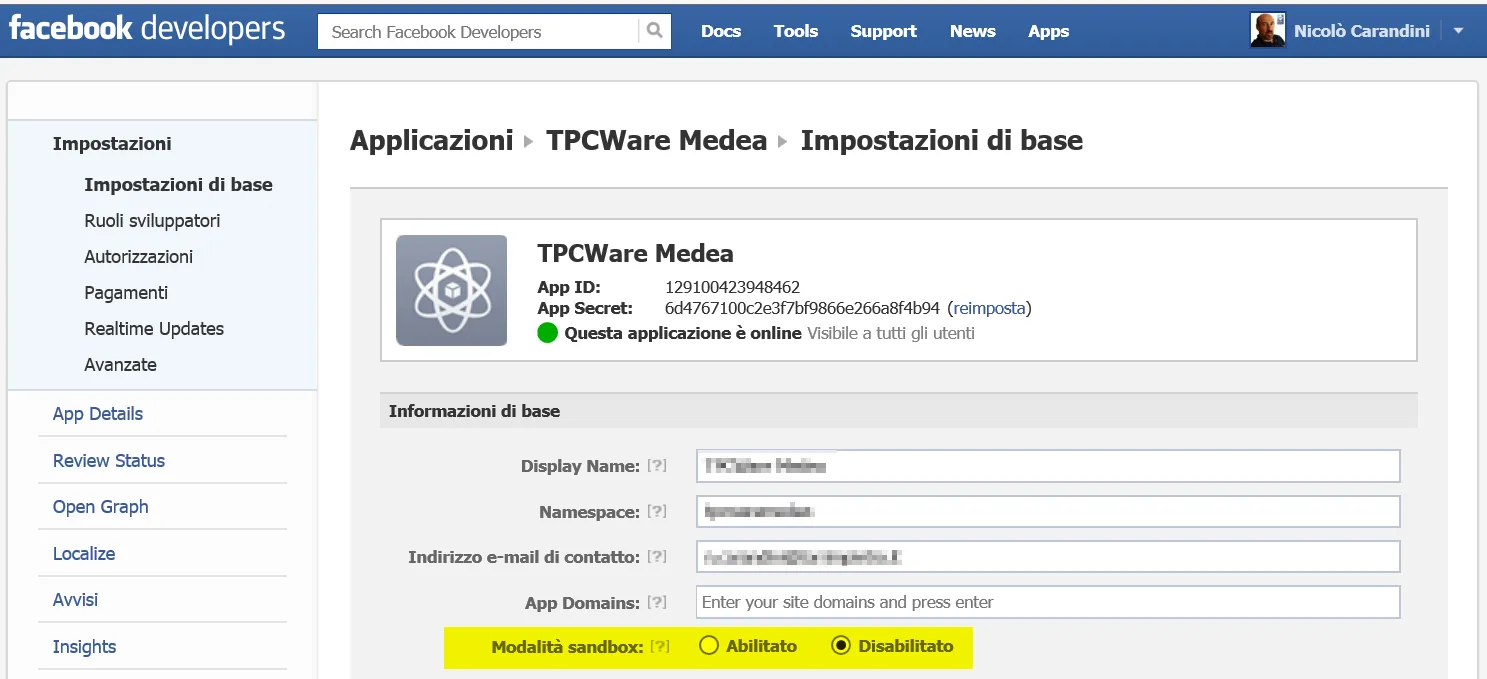在我的项目中,我只是监听了WebView的导航事件。如果发生了这种情况,意味着用户在登录页面上做了某些事情(例如按下登录按钮)。然后,我解析了你提到的页面的URI,其中应该包含OAuth回调URL,如果正确并且结果成功,我手动重定向到正确的页面:
private readonly FacebookClient _fb = new FacebookClient();
private void webBrowser1_Navigated(object sender, System.Windows.Navigation.NavigationEventArgs e)
{
FacebookOAuthResult oauthResult;
if (!_fb.TryParseOAuthCallbackUrl(e.Uri, out oauthResult))
{
return;
}
if (oauthResult.IsSuccess)
{
var accessToken = oauthResult.AccessToken;
FBLoginSucceded(accessToken);
}
else
{
MessageBox.Show(oauthResult.ErrorDescription);
}
}
如果您在异步函数中抽象记录日志,则期望其异步运行,因此事件是可以接受的。
抱歉我的英语。
完整页面的代码:
public partial class LoginPageFacebook : PhoneApplicationPage
{
private readonly string AppId = Constants.FacebookAppId;
private const string ExtendedPermissions = "user_birthday,email,user_photos";
private readonly FacebookClient _fb = new FacebookClient();
private Dictionary<string, object> facebookData = new Dictionary<string, object>();
UserIdentity userIdentity = App.Current.Resources["userIdentity"] as UserIdentity;
public LoginPageFacebook()
{
InitializeComponent();
}
private void webBrowser1_Loaded(object sender, RoutedEventArgs e)
{
var loginUrl = GetFacebookLoginUrl(AppId, ExtendedPermissions);
webBrowser1.Navigate(loginUrl);
}
private Uri GetFacebookLoginUrl(string appId, string extendedPermissions)
{
var parameters = new Dictionary<string, object>();
parameters["client_id"] = appId;
parameters["redirect_uri"] = "https://www.facebook.com/connect/login_success.html";
parameters["response_type"] = "token";
parameters["display"] = "touch";
if (!string.IsNullOrEmpty(extendedPermissions))
{
parameters["scope"] = extendedPermissions;
}
return _fb.GetLoginUrl(parameters);
}
private void webBrowser1_Navigated(object sender, System.Windows.Navigation.NavigationEventArgs e)
{
if (waitPanel.Visibility == Visibility.Visible)
{
waitPanel.Visibility = Visibility.Collapsed;
webBrowser1.Visibility = Visibility.Visible;
}
FacebookOAuthResult oauthResult;
if (!_fb.TryParseOAuthCallbackUrl(e.Uri, out oauthResult))
{
return;
}
if (oauthResult.IsSuccess)
{
var accessToken = oauthResult.AccessToken;
FBLoginSucceded(accessToken);
}
else
{
MessageBox.Show(oauthResult.ErrorDescription);
}
}
private void FBLoginSucceded(string accessToken)
{
var fb = new FacebookClient(accessToken);
fb.GetCompleted += (o, e) =>
{
if (e.Error != null)
{
Dispatcher.BeginInvoke(() => MessageBox.Show(e.Error.Message));
return;
}
var result = (IDictionary<string, object>)e.GetResultData();
var id = (string)result["id"];
userIdentity.FBAccessToken = accessToken;
userIdentity.FBID = id;
facebookData["Name"] = result["first_name"];
facebookData["Surname"] = result["last_name"];
facebookData["Email"] = result["email"];
facebookData["Birthday"] = DateTime.Parse((string)result["birthday"]);
facebookData["Country"] = result["locale"];
Dispatcher.BeginInvoke(() =>
{
BitmapImage profilePicture = new BitmapImage(new Uri(string.Format("https://graph.facebook.com/{0}/picture?type={1}&access_token={2}", id, "square", accessToken)));
facebookData["ProfilePicture"] = profilePicture;
userIdentity.FBData = facebookData;
userIdentity.ProfilePicture = profilePicture;
ARLoginOrRegister();
});
};
fb.GetAsync("me");
}
private void ARLoginOrRegister()
{
WebService.ARServiceClient client = new WebService.ARServiceClient();
client.GetUserCompleted += client_GetUserCompleted;
client.GetUserAsync((string)facebookData["Email"]);
client.CloseAsync();
}
void client_GetUserCompleted(object sender, WebService.GetUserCompletedEventArgs e)
{
if (e.Result == null)
NavigationService.Navigate(new Uri("/RegisterPageFacebook.xaml", UriKind.RelativeOrAbsolute));
else if (e.Result.AccountType != (int)AccountType.Facebook)
{
MessageBox.Show("This account is not registered with facebook!");
NavigationService.Navigate(new Uri("/LoginPage.xaml", UriKind.RelativeOrAbsolute));
}
else
{
userIdentity.Authenticated += userIdentity_Authenticated;
userIdentity.FetchARSocialData((string)facebookData["Email"]);
}
}
void userIdentity_Authenticated(bool success)
{
NavigationService.Navigate(new Uri("/MenuPage.xaml", UriKind.RelativeOrAbsolute));
}
}
 之后,我的程序不会重定向到Landing页面,而该页面是单独的视图。我看到的其他解决方案建议隐藏WebView,但由于身份验证抽象为单个LoginAsync函数调用,因此这些解决方案并不适用。您有什么建议?
之后,我的程序不会重定向到Landing页面,而该页面是单独的视图。我看到的其他解决方案建议隐藏WebView,但由于身份验证抽象为单个LoginAsync函数调用,因此这些解决方案并不适用。您有什么建议? 之后,我的程序不会重定向到Landing页面,而该页面是单独的视图。我看到的其他解决方案建议隐藏WebView,但由于身份验证抽象为单个LoginAsync函数调用,因此这些解决方案并不适用。您有什么建议?
之后,我的程序不会重定向到Landing页面,而该页面是单独的视图。我看到的其他解决方案建议隐藏WebView,但由于身份验证抽象为单个LoginAsync函数调用,因此这些解决方案并不适用。您有什么建议?